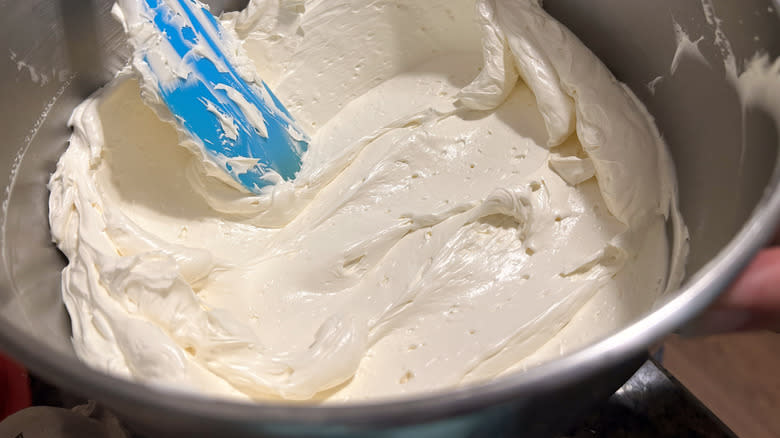How To Tell If Butter And Sugar Are Properly Creamed (And How To Fix It If Not)

A lot of baking recipes call for combining butter and sugar by creaming them together, which is a seemingly simple procedure that's nonetheless possible to mess up (as is just about everything in cooking; hence the popularity of a show like "Nailed It!"). Francisco Flores, who is the Iberostar regional chef of Mexico, told Mashed that what you need to look for in order to ensure that your butter and sugar are properly creamed is "the look and a homogeneous texture." As they explain, "When it's shiny and bright, that's when you know it's ready."
So is it possible to over-beat the butter and sugar? Sure it is, although it's not that easy to do. As those who've been employed in busy bakeries know, sometimes you get deep in the weeds and the beaters keep beating away for an extra few minutes without doing the recipe any real harm. Still, Flores notes that it's possible that serious over-creaming may hurt the recipe but assures us that "there are ways to fix it." They suggest, "You can try heating up the mixture and try to incorporate everything into it" and add "If the recipe calls for liquid ingredients, like milk, try to add that liquid and mix it into the mixture." What this will do, they say, is to "decrease the temperature and make it work."
Read more: 12 Little-Known Facts About Salt
Under-Creaming Can Also Be An Issue

The problem with recipe instructions for a process like creaming is that these are seldom very precise and often rely on subjective descriptors such as "light," "fluffy," or "bright." This can lead to confusion on the cook's part — just how bright is it supposed to be? Brighter than a thousand suns? Well, probably not that bright, or you managed to cream your butter into a nuclear chain reaction. Still, you don't want to under-beat the butter or you won't have a better batter.
So how can you avoid this rookie cookie-baking mistake and be sure your butter and sugar are adequately creamed? Well, it seems that once the mixture hits the optimal state of creaminess, it stops expanding. As soon as the butter and sugar start looking even slightly pillowy-soft and sunny-yellow or whatever your recipe's chosen adjectives may be, take a look at where the mixture is in the bowl — 2 inches from the top? Maybe 3 inches? Beat it for another minute and then eyeball it once more. If it's at the same level, stop beating. If it's risen, give it another minute or two. Split-second timing is not required, since an extra few minutes won't make too much difference
Read the original article on Mashed.
